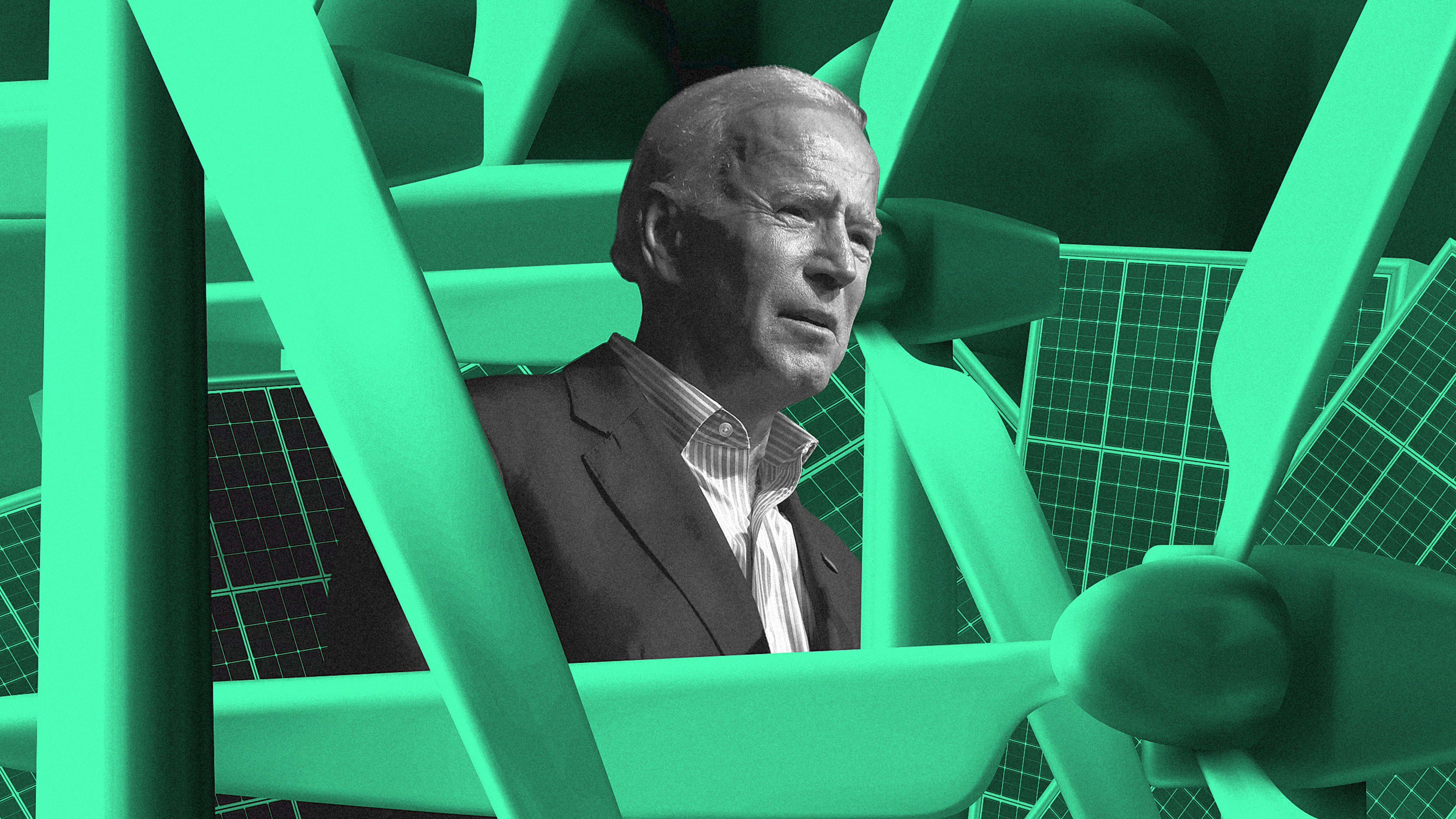Under a Biden administration, the U.S. may set out to reach 100% clean energy by 2035, and net-zero carbon emissions in new buildings by 2030.
That’s if the former vice president takes the advice of the climate subcommittee of his joint task force with Senator Bernie Sanders. The Unity Task Force released this week a 110-page report detailing policy recommendations for a potential Joe Biden presidency in areas including the economy, immigration, criminal justice, and healthcare. But the climate and environment subcommittee, led by Representative Alexandria Ocasio-Cortez and former Secretary of State John Kerry, produced some of the most progressive proposals, pushing beyond existing goals.
“We can and must build a thriving, equitable, and globally competitive clean energy economy that puts workers and communities first and leaves no one behind,” the subcommittee writes in the report, emphasizing the need to fight for environmental justice for communities of color, low-income families, and Indigenous communities, who have borne the brunt of pollution, toxic drinking water, and bad wastewater infrastructure, as well as natural disasters such as Hurricane María and the California wildfires.
The report stops short of the term “Green New Deal,” but its proposals echo the themes of that progressive framework: reducing the use of fossil fuels and curbing greenhouse gases while creating good jobs in clean energy. The new plan includes developing new technologies for the transition to renewables, and manufacturing clean energy tools within the U.S., which would create a wealth of jobs (though the report doesn’t specify numbers). Those workers would be fully trained, compensated with prevailing wages, and given the opportunity to unionize, and officials will prioritize making that workforce diverse and inclusive.
The subcommittee pushes for the restoration of multiple environmental regulations that the Trump administration has rolled back, including protections for Bears Ears National Monument, an area important to Native American residents whose boundaries Trump reduced for agricultural and mining use. It would increase funding for conservation of natural lands, forests, coasts, and oceans, protecting wildlife, all the while building federal programs to help farmers adapt to a new environmental infrastructure.
On climate and energy, the joint committee proposes a goal of net-zero carbon emissions for new buildings by 2030, and overall by 2050, and the total elimination of carbon pollution from power plants across the country by 2035. To reach those goals, it suggests installing 500 million solar panels and 60,000 wind turbines—all American made, for more jobs—and building a federally funded modern electric grid to power communities with clean energy. Other measures would promote energy efficiency in housing and regulate car emissions. The U.S. would also rejoin the Paris climate accord and ratify the Kigali Amendment, which aims to gradually eliminate hydrofluorocarbons and is already signed by 97 countries and the E.U.
Biden’s previous target for 100% clean energy has a deadline of 2050—also the current goal for many states—meaning these recommendations shave 15 years off of that target, Ocasio-Cortez noted on Twitter. Also on the Climate Task Force was Varshini Prakash, executive director of the Sunrise Movement, a youth-led activist group that advocates for climate change action. That group, which had endorsed Sanders for president, previously gave an F rating to Biden’s climate plan. Young voters are increasingly concerned about climate change, and they’re a crucial faction that Biden still needs to win over.
Prakash’s summation of the plan was optimistic. She tweeted that they had managed to “move the needle a lot,” though they hadn’t reached a consensus on job or investment numbers. “We are leaving these discussions with policies that, if implemented, will make Joe Biden’s climate agenda far more powerful, equitable, and urgent than where his plans were just weeks ago,” she tweeted.
But are these ambitious goals achievable? In June, a University of California report found that the U.S. could run on 90% clean electricity by 2035, without lifting the costs of electric bills, and that a new renewable infrastructure would generate more than half a million jobs per year. By 2045, Fast Company staff writer Adele Peters wrote, “the entire electric grid could run on renewables.” The Biden-Sanders task force takes that goal a step further, aiming for 100% clean energy by 2035.
Sonia Aggarwal, a reviewer on that report, and vice president at nonprofit Energy Innovation, tells Fast Company that the latest Biden-Sanders clean energy goals are in fact feasible. “Clean energy has become so cheap that we can build it rapidly, at scale, without raising customer electricity bills,” she says. “This is one part of our economy that is ripe for investment to create good jobs, making our kids healthier and our water cleaner.”
There’s no guarantee, of course, that Biden will bring these suggestions to his official platform. “The work of the task forces has been collaborative and productive, and Vice President Biden looks forward to reviewing their full recommendations,” campaign spokesperson Jamal Brown told The New York Times. Biden calls for a “clean energy revolution” on his site, but he still has to win the election, including in states such as Pennsylvania with strong natural gas extraction industries. While Biden supports no new fracking, he hasn’t called for the halting of existing extraction.
Following the publication of the report, Bernie Sanders encapsulated the cautious optimism of the overall task force on Twitter. “Though the end result isn’t what I or my supporters would’ve written alone,” he tweeted, “the task forces have created a good policy blueprint that will move this country in a much-needed progressive direction and substantially improve the lives of working families throughout our country.”
Recognize your brand's excellence by applying to this year's Brands That Matters Awards before the early-rate deadline, May 3.
